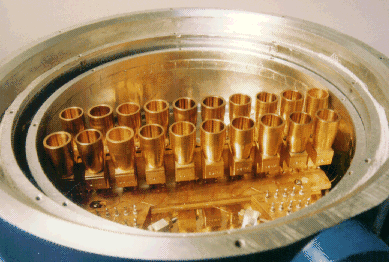About QMCI
Where we came from...
QMC Instruments Ltd. was incorporated in 1971 by London University and operated from the Physics Department of what was then called Queen Mary College, and is now called Queen Mary, University of London.
The Wolfson Foundation funded the initiation of a portfolio of commercial Small and Medium Enterprises (SMEs) under the umbrella of QMC Industrial Research Ltd. QMC Instruments Ltd. was one of these. Other businesses in the diverse group were active in materials fire testing, the design of deep sea anchors for floating oil rigs and even early forms of office automation and information technology.
QMC Instruments Ltd' core activity in its early years was the design and manufacture of liquid helium cooled detector systems based on the Indium Antimonide (InSb) hot electron bolometer. The InSb detector had previously been used to great effect as a heterodyne receiver for Far Infra-red (FIR) astronomy. In the commercial environment QMC Instruments Ltd. successfully developed this as a direct detector which became a crucial tool for the plasma fusion community who needed a sensitive millimetre-wave detector to measure electron density and temperature profiles in Tokamak reactors. Early work was carried out at JET in Oxfordshire in the UK and at the Princeton Plasma Physics Laboratories in the US.

The photograph shows the internal layout of a 2 x 10-channel InSb detector array built in the 1980s for Princeton Plasma Physics Laboratories
Where we are now .....
Since 2001 QMC Instruments Ltd. has been located at Cardiff University alongside its academic colleagues in the School of Physics and Astronomy. The Astronomy Instrumentation Group there is a world leader in the design and provision of receivers for continuum astronomy in the FIR region. Their work has been central to the success of astronomy in this region of the spectrum over the last twenty years. They have most notably been heavily involved in instruments for ground-based facilities such as the James Clerk Maxwell telescope in Hawaiii, balloon-borne experiments such as Boomerang, and satellite projects such as IRAS, ISO, Herschel, Planck and Spitzer.
The range of products offered by QMC Instruments Ltd has evolved to reflect not only the results of research and development in the University, but also the increasing potential of Terahertz (THz) techniques as solutions to diverse and previously unidentified problems.
We produce a long-established range of cryogenic detectors and associated components and instruments. These are used in diverse applications such as atmospheric remote sensing, astronomy, semiconductor materials characterisation, hot plasma fusion diagnostics and electron spin resonance (ESR) spectroscopy. Our more recent work includes a multi-channel FIR detector for laser interferometry of the plasma in the Experimental Advanced Superconducting Tokamak (EAST) in Hefei, China, anti-reflection coated vacuum windows for the Herschel Heterodyne Instrument for the Far Infrared (HIFI), and band-selection filters for the Herschel Photodetector Array Camera and Spectrometer (PACS). The Herschel satellite was launched in May 2009. We are currently supplying windows and cooled polarisers for the Atacama Large Millimeter Array (ALMA) in Chajnantor in the Chilean Andes.
..... and where we are going
Our background in astronomy has given rise to the development of THz detection technology with an emphasis on high sensitivity. It is our belief that THz solutions will be brought to bear on new and exciting applications. We further believe that sensitive passive detection capability is crucial to the quality and reliability of information derived from THz techniques applied to these new areas.
We are proud of the contribution we have been able to make over the last forty years to major technology developments in our field. THz techniques are used to control fusion reactors which may one day be the answer to our energy needs. THz astronomical observations have managed to characterise the universe to startling accuracy. We can now consider a world in which THz techniques are applied to security, short range communication, cancer detection, bio-molecular analysis, and product quality assurance in fields as diverse as microelectronics and pharmaceuticals. Interest in the THz region of the spectrum has never been greater.
QMC Instruments Ltd. is working alongside its world class academic colleagues and its commercial partners and representatives to develop a new generation of convenient, highly sensitive, cryogen-free THz detection technologies. We are committed to the development of products and procedures that will ensure that the full potential of the THz region is realised so that it makes a significant contribution to improvements in the future quality of life.